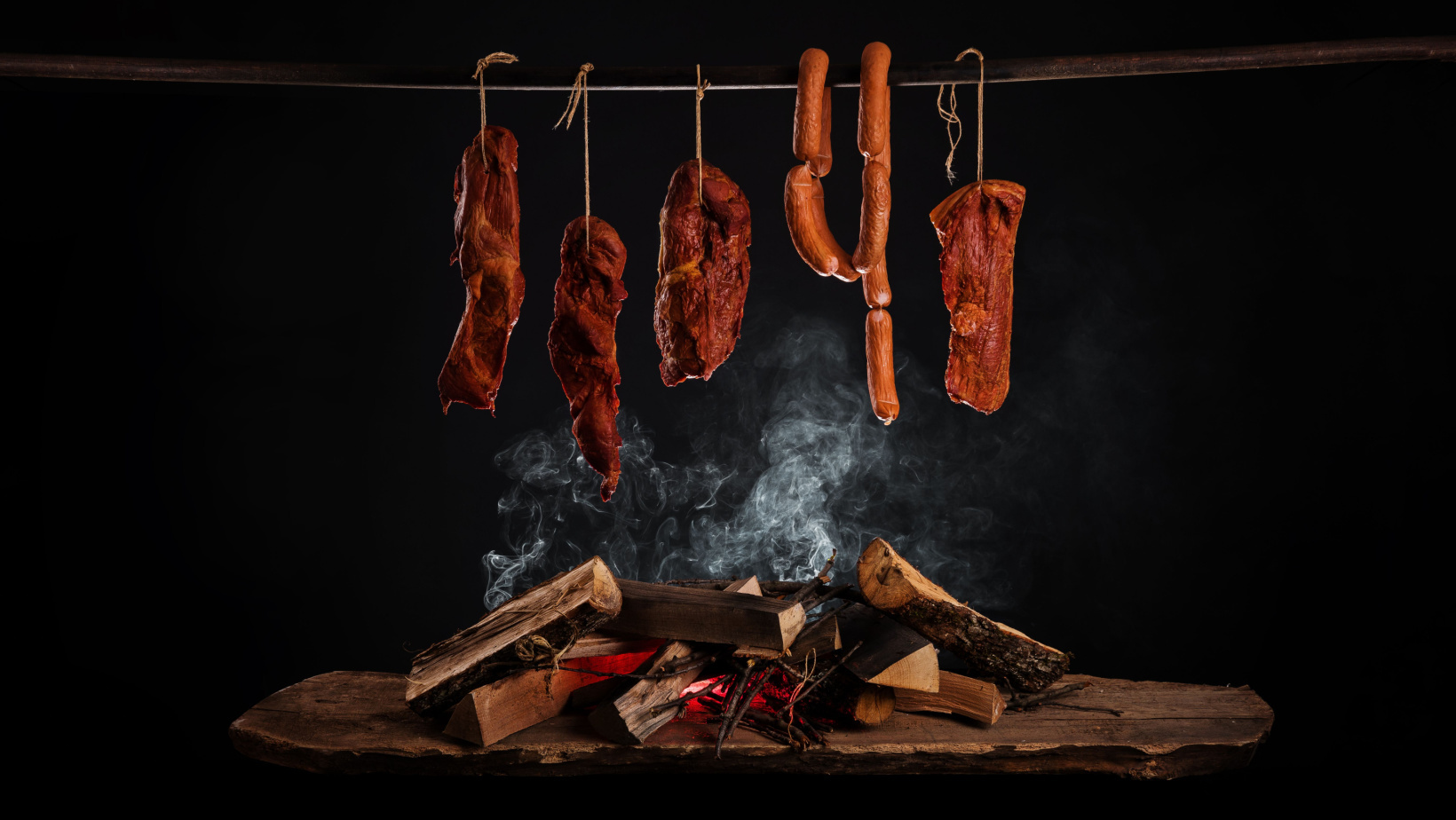Smoking meat has been so closely tied to our historic attempts at preserving food that over time, the association with smoking and preservation have become twisted. In early human history, food was dried along outdoor fires that would inevitably be seasoned by smoke from the fire. This smokey flavor is what has captivated every backyard BBQer and has created an entire culture around smoking meats.
The type of wood chosen to use is largely personal preference. Hickory, maple, cherry are all types of wood that are commonly used and impart smells indicative of their name. The key is to choose hardwood that will impart desirable flavors to your smoked meat. The novice smoker may make an easy mistake in choosing a soft wood like fur/pine which can produce potent pine flavors that can render a piece of meat inedible. Nothing can be more frustrating than spending an entire day (8 hours or more) smoking a piece of meat for it to be tainted by an unappealing flavor.
Using a smoker that can maintain temperatures up to 275°F is going to allow for adequate smoke generation as well as a relatively slow cook. Regular supervision of this smoker to ensure temp is stable and smoke is light and blue will make the process painless while the meat is smoking/cooking. There are many different methods to estimate the cook time for a piece of meat which can vary depending on many factors (including type and temp of smoker as well as environmental conditions) but the most reliable method for determining doneness is with an instant read thermometer.
The recipe we prepared was Scott’s favorite pulled pork, which was altered slightly with the addition of 1 tablespoon (~11g) Red Miso Powder which adds a nice umami flavor to the recipe. After rounding off the pork butt (simply remove excess fat and bits of muscle that will eventually char or overcook), allow the cut of meat to rest at room temperature for up to an hour for the development of a pellicle (a dry membrane on the outside of the meat). Once this has formed, rub the dry seasoning mix over the entirety of the meat and allow the rub to mind for a few minutes. This butt can now be smoked for up to 9 hours, until the internal temperature reaches over 200°F (covering the butt with tinfoil after 160°F internal temp reading will speed up the rest of the cook).
Smoking can also be applied at low temperatures. Cold smoking is typically used to impart flavors on cured meats, which usually require cooking after treatment. A commonly and easily cold smoked product is cheese. This can be accomplished by smoking between 70-90°F and cutting your desired cheese up into uniform cubes that can be seasoned with smoke. The amount of time used to smoke is variable based on preference, but a pleasant smokey flavor can be achieved just after a few minutes.
The smokey flavors that are craved during summertime are available throughout the year with the right motivation and incentive, and what’s a better incentive than a tender delicious pulled pork that’s been smoked for 8 hours?
Click here to see the full video episode as we break down smoking at home!


